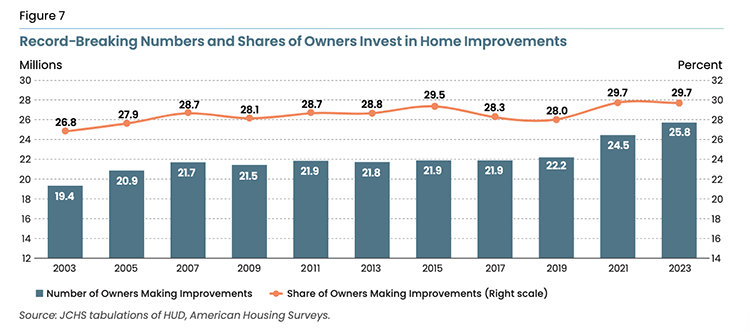Why Haven’t Loan Officers Been Told These Facts? Owner-Occupied SFD: Rental Income as Stable Monthly Gross Income
Market segmentation is an effective strategy for mortgage professionals to differentiate themselves in the market. For instance, consider disabled homeowners or renters. It is not uncommon for a disabled applicant to have rental or boarding income from a live-in aide. These situations are often part of publicly funded arrangements.
In these arrangements, the disabled person receives rental income for their live-in aid. The state may provide this rental income to the disabled person.
It’s unlikely that you’ll frequently encounter applicants with these types of arrangements by chance. However, what if you were to actively seek out these transactions? Identify the key stakeholders and potential referral sources that stand to gain from access to this mortgage solution. By enhancing your awareness of market segments, you can confidently uncover new opportunities for products and services.
From FHLMC, Rental Income From a Live-in aide Residing in a 1-Unit Primary Residence
Eligibility
Rental income generated from the Borrower’s 1-unit Primary Residence, including rental income from an ADU may be used to qualify a Borrower with a disability provided the rental income is from a live-in aide and the requirements of this subsection (h) are met.
Typically, a live-in aide will receive room and board payments through Medicaid waiver funds from which rental payments are made to the Borrower.
Rental income documentation and calculation requirements
Establishing net rental income from a live-in aide residing in a subject 1-unit Primary:
Income documentation:
- The Seller must include in the Mortgage file evidence that the Borrower has received stable rental income from a live-in aide for the most recent 12 months
Limitations on the use of rental income:
- The amount of net rental income used for qualifying must not exceed 30% of the total stable monthly income used to qualify the Borrower for the Mortgage.

BEHIND THE SCENES: GSE IPO?
Excerpted from JP Morgan Chase Fixed Income Security Blog
The discussion about the conservatorship of FNMA (Fannie Mae) and FHLMC (Freddie Mac) is intensifying once again. Back in August, President Trump shared an image of himself overseeing the IPO of a new mortgage agency. One probably shouldn’t read too much into the mugging and chatter. On the other hand, these are unusual times, and it wouldn’t be surprising to see a further transformation of these mortgage giants.
JP Morgan Chase provides valuable insights regarding the potential impact of an IPO or other restructuring of the agencies on the mortgage markets.
Potential MBS Market Implications
Privatizing Fannie Mae and Freddie Mac raises many concerns, three of which are:
- Impact on Mortgage Rates: The potential widening of mortgage spreads and the resulting increase in primary mortgage rates could negatively impact both investors and consumers. Uncertainty around government support after privatization might lead to higher and more volatile borrowing costs, worsening the current challenges in housing affordability.
- Disruptions to the Mortgage To-Be-Announced (TBA) Market: A fully functioning forward settlement market is essential for the mortgage industry, as it allows mortgage originators to manage risk at the time of a rate lock. In 2024, the TBA market had an average daily trading volume of $290 billion, making it one of the most liquid and transparent financial markets globally. Any disruptions to the TBA market could have significant ripple effects on housing finance.
- Ginnie Mae Market Share: Decisions about the guarantee could have a significant impact on the issuance of Ginnie Mae-guaranteed mortgages. If the creditworthiness of the GSEs is seen as weaker, leading to wider spreads and higher primary rates, there might be a shift in MBS issuance towards Ginnie Mae, potentially increasing the risk borne by taxpayers. Policymakers need to carefully consider these potential outcomes against the advantages of reducing government involvement in the mortgage market.
Conclusion
The privatization of Fannie Mae and Freddie Mac is a complex issue with significant risks and uncertain benefits. In the coming months, we may learn more about the President Trump’s willingness to pursue this path. However, the journey is filled with challenges, such as the need for substantial capital, legislative obstacles, and potential market disruptions. Any perceived decline in the credit quality of GSE-backed mortgage-backed securities (MBS) could pose serious problems for financial markets, housing markets, and consumers. Policymakers must carefully balance the desire to reduce government involvement with the need to maintain stability in the housing finance system. Ultimately, any move toward privatization will require meticulous planning and coordination among government branches to mitigate risks and ensure a smooth transition. Given these complexities, we believe there is a low probability of a resolution in the near term, but a narrow path remains if the Administration chooses to pursue it. The most likely scenario is maintaining the status quo, with Fannie Mae and Freddie Mac continuing to build capital through retained earnings, as this approach has proven effective in sustaining a stable mortgage market.

Tip of the Week – Sign Up for 2025 CE
Expanding your product offerings is an effective way to enhance your business’s vitality. This year, the Loan Officer School is surveying non-government financing options for construction and renovation projects.
The shortage of affordable housing is unlikely to be resolved anytime soon. As affordable, move-in-ready housing solutions remain hard to find, the demand for construction and renovation loans is expected to increase. According to the JCHS, Harvard University, the US remodeling market soared above $600 billion in the wake of the pandemic and, despite recent softening, remains 50 percent above pre-pandemic levels.
Discover how to enhance borrower advantages through construction and renovation financing.
- Enhanced housing affordability.
- Housing options for aging or disabled borrowers.
- Housing solutions for borrowers caring for aging or disabled family members.
- Multi-generational housing solutions.
For any questions or inquiries regarding state education needs, please feel free to call.
Call Us Today! (866) 314-7586
Sign up for a 2025 CE Webinar
Online self-study classes are available.
Sign up for 2025 Online self-study CE
